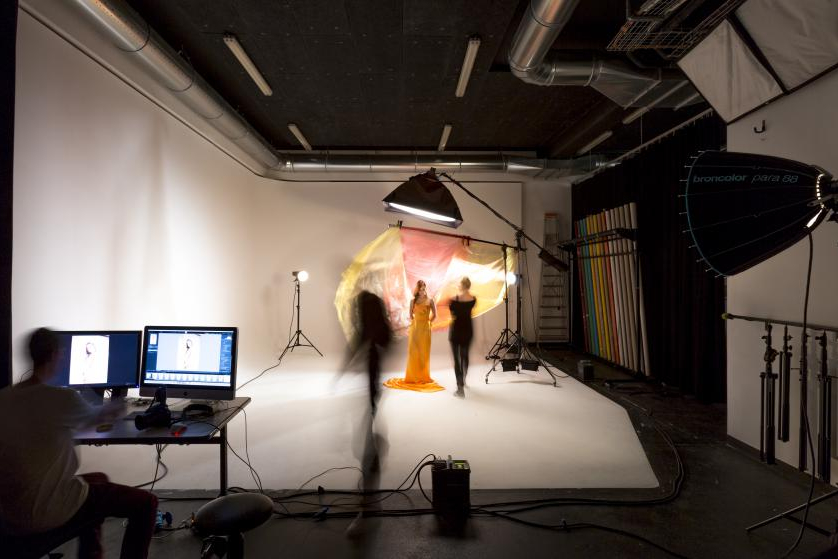- Accueil
- La recherche
- Mémoires et Travaux de fin d’études
- FILMER L’ISOLEMENT Le corps étranger au monde
FILMER L’ISOLEMENT Le corps étranger au monde
Auteur : BRAUMAN Sacha
Directeur(s) de mémoire : John Lvoff & Antoine Héberlé
Cinéma
Résumé : Comment habiter le monde quand on en est détaché ? Telle est la question à laquelle tente de répondre les corps d’un cinéma quelque peu différent : un cinéma où le temps a l’air de s’écouler plus lentement, où les espaces sont marqués par l’absence et la désaffection, où les paroles sont vides et futiles, … un cinéma autre qui déjoue nos attentes et dans lequel les corps ne sont plus au centre du récit et du champ mais rejetés aux bords du cadre, apposés à la surface de l’image ou exclus dans un hors-champ incertain par un montage et une caméra libérés de toute contraintes narratives. Dans ce cinéma, le monde parait si loin pour les corps filmés, contraints à vivre isolés. Hors du temps, seuls dans l’espace, sans attache aux autres, l’isolement pour eux est total et les condamne à flotter dans un entre-deux existentiel. Pourtant, ils tentent tout pour y sortir et s’ancrer dans le monde : ils le prennent en photo avec l’espoir de restituer sa
réalité ; ils le traversent de long en large pour cerner les espaces qui le composent ; ils amorcent le dialogue avec ceux qui le peuplent, motivés par le désir de créer un lien ; ils le scrutent sous toutes les coutures pour comprendre ses mystères ; ils l’écoutent attentivement essayant de percer le silence qui l’imprègne ; ils s’y fixent durablement au sein de maisons et appartements dans l’optique de ne vivre que dans le temps présent du quotidien ; … Mais rien n’y fait, le monde reste à distance. Les corps sont condamnés à y rester étranger, à le percevoir sans jamais y participer, à en observer des fragments derrière des écrans.
Mais quel est donc cet étrange cinéma où l’intrigue est annexe, voire
absente, où un personnage n’a ni passé, ni patronyme, ni destination ? S’il n’a pas de dénomination précise, ce cinéma a ses maitres parmi lesquelles se trouvent Chantal Akerman, Michelangelo Antonioni, Jim Jarmusch, Yasujiro Ozu, Gus Van Sant et Wim Wenders. Six cinéastes, six décennies de cinéma, cinq pays et une multitude de films qui redéfinissent un nouveau rapport du corps au monde, une nouvelle perception de l’espace et du temps, celle d’un corps isolé. Mais est-il vraiment question d’isolement ? À nous de le découvrir.
Mots-clés :Corps — Espace — Temps — Cadre — Son — Mouvement
Isolement — Errance — Réclusion — Silence — Regard
—
Abstract: How to live in the world when we are detached from it? This is the
question which the bodies of a different cinema attempt to answer: a cinema
where time seems to flow more slowly, where spaces are marked by absence
and disaffection, where words are empty and meaningless… Another cinema
that defies our expectations and in which the bodies are no longer at the
center of the story and the center of the screen, but relegated to the edges of
the frame, affixed to the surface of the image or excluded in a troubling offscreen by a montage and a camera that appear to be free from any narrative constraints. In this cinema, the world seems so far from bodies on screen that are forced to live in isolation. Out of time, alone in space, without ties to others; isolation for them is total and condemns them to float in an existential in-between. Yet, they try everything to escape and to attach themselves to the world: they shoot it with the hope of restoring its reality; they cross it from one end to the other in order to identify its spaces; they start up conversations with those who populate it, motivated by the desire to create a link; they observe it from every angle to understand its mysteries; they listen to it carefully trying to pierce the silence that permeates it; they settle permanently in homes and apartments in order to live only in the present time of everyday life; … But nothing works, the world stays at a distance. The bodies are condemned to remain foreign, to perceive it without ever participating in it, to observe fragments behind screens.
But what is this strange cinema where the plot is suspended, if not absent, where a character has neither past, nor name, nor destination? Even if it does not have a specific name, this cinema has its masters among whom are Chantal Akerman, Michelangelo Antonioni, Jim Jarmusch, Yasujiro Ozu, Gus Van Sant, and Wim Wenders. Six filmmakers, six decades of cinema, five countries and a multitude of films that redefine a new relationship of the body to the world, a new perception of space and time, that of an isolated
body. But is it really about isolation? That is for us to say.
Keywords: Body — Space — Time — Framing — Sound — Movement
Isolation — Wandering — Confinement — Silence — Look




